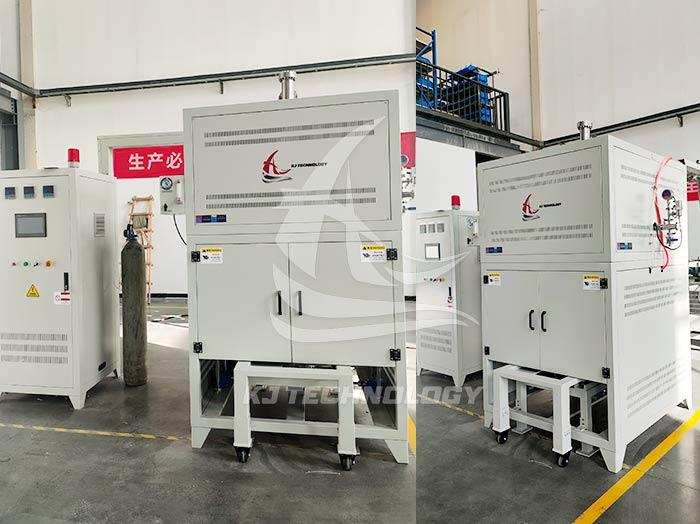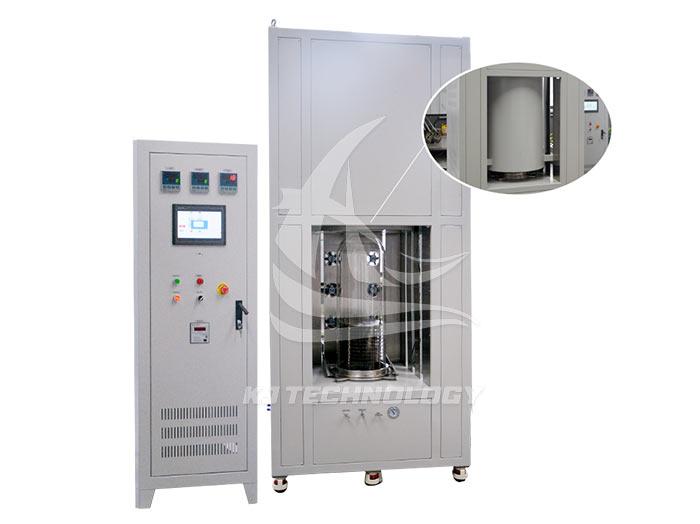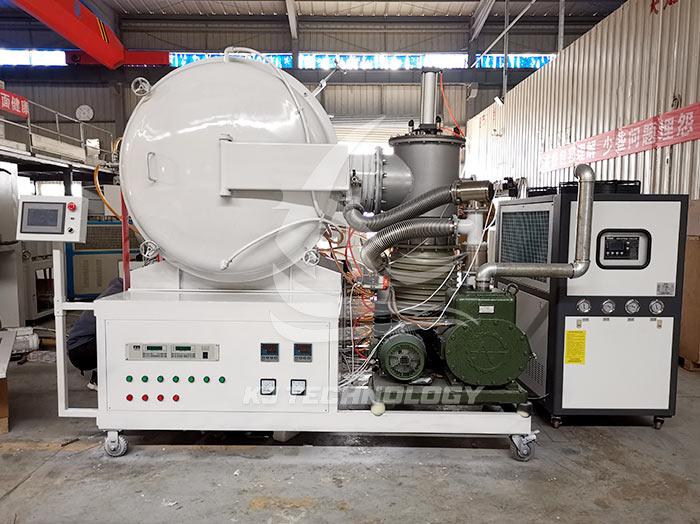Application of Gas Quenching Furnace in the Metal Industry
 10-27-2025 Author: KJ technology
10-27-2025 Author: KJ technology
Gas quenching furnaces are widely and deeply used in the metal industry, especially in key fields such as aerospace, automotive manufacturing, precision machinery, mold manufacturing, additive manufacturing, and powder metallurgy, demonstrating their efficient, clean, and precise heat treatment advantages. The following is a detailed analysis of the application of gas quenching furnaces in the metal industry:
1. Aerospace field: safeguarding the core performance of high-end equipment
In the aerospace field, gas quenching furnaces are the core equipment for processing key components such as engine blades, turbine disks, and spacecraft structural parts. These components need to withstand enormous stress and temperature changes in extreme environments, and gas quenching enhances their performance through the following methods:
Optimize material organization:
Gas quenching can control the phase transformation process of metals. For example, nickel based high-temperature alloys can obtain small and uniform precipitation of γ 'phase after gas quenching, which improves their high-temperature strength and meets the long-term stable operation requirements of engines in high-temperature and high-pressure environments.
Reduce deformation and cracks:
Vacuum environment avoids oxidation, high-pressure gas cools evenly, and reduces thermal stress. For example, after gas quenching, the fatigue life of titanium alloy aviation fasteners is extended, and there is no oxide layer on the surface, which directly enters the subsequent processing flow.
Support complex shape processing:
Gas quenching is suitable for heat treatment of thin-walled and irregular structural components, such as precision forming of aircraft engine blades, to ensure their aerodynamic performance and structural strength.
2. In the field of automobile manufacturing: improving the reliability and lifespan of components
The automotive industry has extremely high requirements for the strength, wear resistance, and dimensional stability of components. Gas quenching furnaces meet these demands through the following methods:
Transmission and transmission components:
Gas quenching can control the distortion of gears and synchronizer sleeves, and improve meshing accuracy. For example, a certain car company has adopted gas quenching, which reduces gear tooth distortion and improves the pass rate. At the same time, cleaning the surface eliminates the cleaning process and reduces production costs.
Core components of the engine:
The crankshaft, connecting rod, etc. require high strength and wear resistance, and gas quenching avoids cracking through precise temperature control. For example, after gas quenching, the crankshaft of an engine has higher hardness, improved wear resistance, and extended service life.
Heat treatment of new energy components:
In the field of electric vehicles, gas quenching is used for heat treatment of components such as motor shafts and battery casings to enhance their conductivity, corrosion resistance, and lightweight level.
3. Precision Machinery Field: Achieving a Balance between High Precision and High Performance
The precision machinery industry has strict requirements for the dimensional accuracy and hardness of tools and measuring instruments. Gas quenching furnaces achieve precise control through the following methods:
Tool and mold manufacturing:
After gas quenching, the hardness of high-speed steel cutting tools reaches 64-65HRC, with good thermal hardening and suitable for high-speed cutting. After 1.5MPa gas quenching, the service life of the 5-ton H13 steel die-casting mold is improved, the surface is free of oxidation, and the polishing process is reduced.
Measuring tool heat treatment:
Vernier calipers, micrometers, and other measuring tools require high hardness and dimensional stability. Gas quenching can avoid deformation and ensure measurement accuracy. For example, after a certain measuring tool factory adopts gas quenching, the product qualification rate increases and the repair rate decreases.
4. Mold manufacturing field: extending mold life and reducing maintenance costs
The mold manufacturing industry has extremely high requirements for the thermal stability, wear resistance, and fatigue resistance of molds. Gas quenching furnaces improve mold performance through the following methods:
Die casting molds:
Gas quenching can reduce thermal distortion and extend mold life. For example, after gas quenching, the thermal distortion of aluminum alloy die-casting molds is controlled within a very narrow range, resulting in better dimensional accuracy and extended mold life.
Plastic molds:
Gas quenching can improve the surface smoothness and corrosion resistance of molds. For example, a certain plastic mold factory uses gas quenching, which reduces the surface roughness of the mold and increases the product qualification rate.
5. Additive Manufacturing and Powder Metallurgy: Supporting the Research and Application of New Materials
With the development of additive manufacturing (3D printing) and powder metallurgy technology, gas quenching furnaces play a key role in the research and development of new metal materials
Heat treatment of metal powder materials:
Gas quenching furnaces are used for annealing and solution treatment of spherical metal powders to enhance their flowability and formability. For example, Jinggao Youcai uses a gas quenching furnace to process pure silver and silver alloy powders, obtaining high-quality powders with high stability and low oxygen content, meeting the needs of spraying, brazing, and other applications.
Post processing of 3D printed components:
Gas quenching can eliminate residual stress in 3D printed components and improve their mechanical properties. For example, a certain aerospace company uses gas quenching treatment to 3D print titanium alloy parts, which improves fatigue resistance and meets the requirements of lightweight design.








